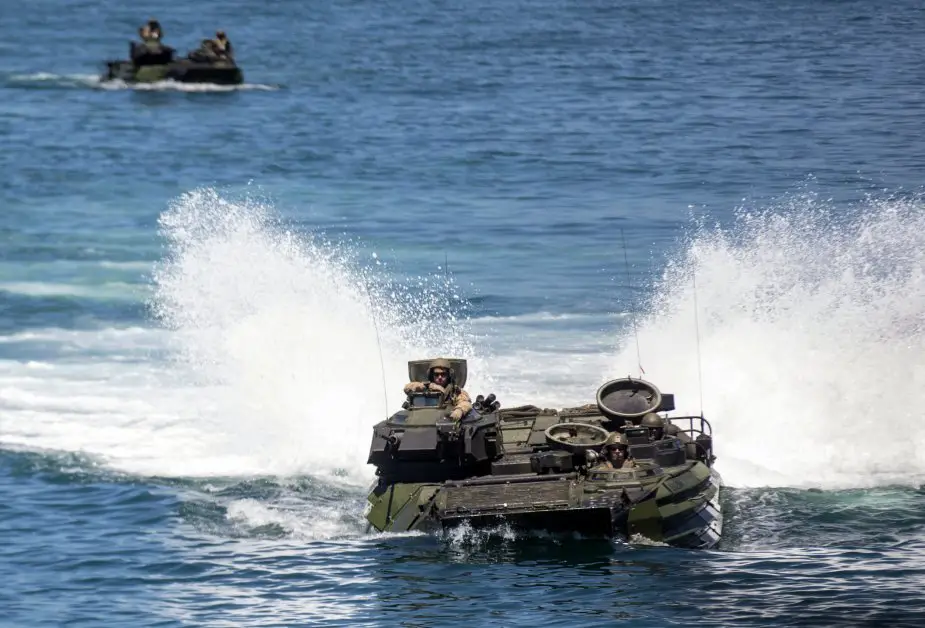The Marine Littoral Regiment to be created and deployed in Hawaii will be the first of its kind in the U.S. Marine Corps. More such units are expected to be set up elsewhere, namely in Japan and Guam. Reflecting the importance of the new formation, the 3rd Marines headquarters will be re-designated the 3rd Marine Littoral Regiment headquarters, William Cole reports in the Honolulu Stars. The Hawaii regiment has about 3,400 Marines.
Follow Army Recognition on Google News at this link

USMC AA7V, officially designated AAVP-7A1 (Picture source: U.S. Marine Corps)
Marines will become specialists in ship-to-shore capabilities in austere conditions to, among other things, sink ships at sea using missiles fired from unmanned vehicles that will operate inside the range of enemy missiles fired back at them while trying to move about quickly to avoid being targeted.
Additional Marine Littoral Regiments may be based in Japan and Guam, but the first Hawaii-based unit is expected to have 1,800 to 2,000 Marines carved out mainly from units already there, including one of three infantry battalions at Kaneohe Bay, according to Maj. Joshua Benson, a spokesman for Marine Corps Combat Development Command. As an exception, most of the companies and artillery batteries that will make up a littoral air defense battalion will come from units not currently stationed in Hawaii.
“The Marine Corps is at an inflection point, and we must change,” Commandant Gen. David Berger told the Marine Corps Association and Foundation in November. The Corps is purpose-built for large-scale conventional land-borne operations. “We are built, ideally, for 1990.” The redesign of the Marine Corps is “driven by China’s pivot towards the sea, and that primary front which they have opened up has renewed great power competition — and you can add Russia, of course, to that equation,” Berger said. Advances by China’s missile forces means that “presumptive sea control is no longer something that the United States can rely on. We will compete for it,” the commandant said.
Enter what the Marine Corps calls “expeditionary advanced base operations,” or EABO, a concept being pursued to distribute highly mobile Marines across Pacific islands and arm them with advanced missiles that can aid the Navy by sinking ships in contested choke points.
The “inside force” would operate within the range of enemy missiles in places like South China Sea islands under the theory that they would be hard to detect. “Our peer adversaries need to perceive a bunch of small, mobile Marine units in their backfield with low signatures, bad attitudes and toolkits full of disruptive capabilities”, Berger said. Carl Schuster, a retired Navy captain and adjunct faculty member at Hawaii Pacific University, said: “In a way, it’s a counter to the Chinese putting bases in the South China Sea,” Schuster said. “We may not have enough ships to cover the ground, but we have enough firepower and a concept to cover that ocean.”
The three-year setup plan for the Hawaii Marine Littoral Regiment foresees the use of the Navy Marine expeditionary ship interdiction system, or NMESIS, with Naval Strike Missiles that have a range greater than 115 miles launched from joint light tactical vehicles, including unmanned vehicles. The Marine Littoral Regiment “will utilize multiple small but long-range landing craft as its primary method of tactical and theater-wide mobility,” Benson said.















